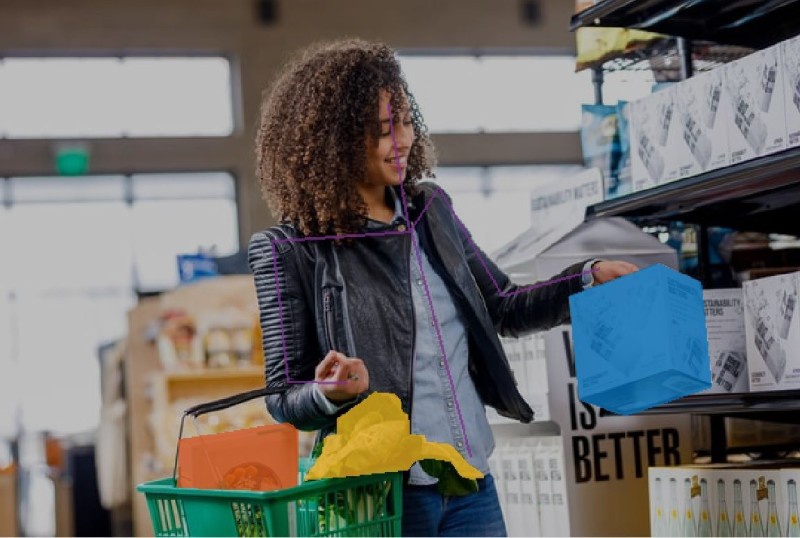Artificial Intelligence boosts productivity saves time and increases efficiency when applied across industries. In retail, the story is no different. AI is already being used by savvy retailers to improve productivity and profitability. Retail business owners are investing in cutting-edge technologies, including Artificial Intelligence, robotics, data analytics, and logistics automation, becoming more customer-centric and responsive to demands in the industry.
The Retail Industry today is more fragmented and competitive than ever before. The aim of AI technologies seems to be to enhance the shopping experience by providing convenience or increasing engagement. Brands and business leaders need to be aware of the trends shaping the future of retail and the changing priorities of consumers. Transparency, purpose, sustainability, and inclusivity are among the most important concerns retail businesses need to address, publicly, to secure their future success.
Use Cases of AI in Retail
Let's take a look at some of the practical applications of AI in retail and the data annotation techniques behind them.
Autonomous Checkout
The system is making use of a combination of computer vision, affordable ceiling-based cameras, and a precise in-store navigation map to detect the actions performed by each customer entered. Whether in retail locations or worksites, users can grab a selection of items and walk away, while the system takes care of recording the transaction.
Autonomous checkout technology will reduce labor costs, improve customer experience and improve profit margins for retailers. Customers can have their faces scanned by facial recognition software before entering the store or are required to swipe a card before entering. By understanding the interactions of customers and seeing the movement of products is enabling a checkout-less experience.
Virtual Fitting Rooms
Virtual mirrors incorporate computer vision and augmented reality technology to allow users to try on different outfits in different sizes and colors without having to change and use the fitting room. A customer scans the code of a clothing item and the virtual mirror displays the image of the person in the outfit. Virtual mirrors use gesture recognition algorithms to recognize user commands and they also feature a virtual cart.
Once a buyer shortlists an item for purchase, it is added to the virtual basket for later payment and checkout. Virtual fitting rooms allow customers to see what they would look like in any item of clothing. These trial rooms are not just perfect only for the apparel brands, but the cosmetic and beauty companies can also deploy them so that their customers can try the beauty products without actually applying them to their skin.
Chatbots and Shopping Assistance
Chatbots are programmes that use artificial intelligence to communicate with customers via chat, text, or voice. Retailers can use AI-powered chatbots to efficiently engage and serve their customers. Retailers may now answer a significant number of enquiries with the help of chatbots, whether they are in-store, online, or even before they enter the store. They're set up to quickly respond to questions, make product recommendations, and provide support.
Additionally, some AI conversational systems collect data and provide insights into clients' purchasing habits and product preferences. As a result, when customers receive customized attention and fast assistance, they are more likely to become attached to and loyal to the company.
Customer’s Tracking and Analysis
Decision-makers in the retail industry are expected to rely heavily on AI technologies. This technology can assist shops in determining their consumers' requests and needs, allowing them to become more customer-centric. Retailers may make well-informed business decisions about the quantity of goods to order based on customer behaviour using data obtained through the AI-driven analytics platform. It would not only improve efficiency but also save the company time and money.
Using AI algorithms, retail businesses can run targeted marketing campaigns based on customers’ region, preferences, gender, and purchasing habits. It will help in improving customer loyalty and retention as a personalized experience is a great way to show them care.
Data Annotation for Retail AI
Image annotation for retail has many purposes. One way image annotation and image tagging helps offline retailers is when it improves the app’s image search functions or when it is able to improve inventory management to keep store shelves stocked with the products that the customers want.Retail applications are well suited to Bounding Box annotations which are cheap, additionally there are usually many bounding boxes per image which also lowers the price.All the items placed in the shelves are annotated for recognition of which item is present and what is picked. It is also used for managing stock of the items.
Experienced image annotation teams annotate images of shelves, prices, brands, and products so companies can track shelf management, identify items that have been misplaced, and quickly conduct price checking. Image annotation is used to detect various pictorial content such as specific features of a product, various objects, or other image elements.
At TagX, we combine technology with human care to provide image annotations and video annotations with pixel-level accuracy. Our data labelers maintain quality while processing & labeling the image data which can be used efficiently for various AI and ML initiatives.


No comments yet